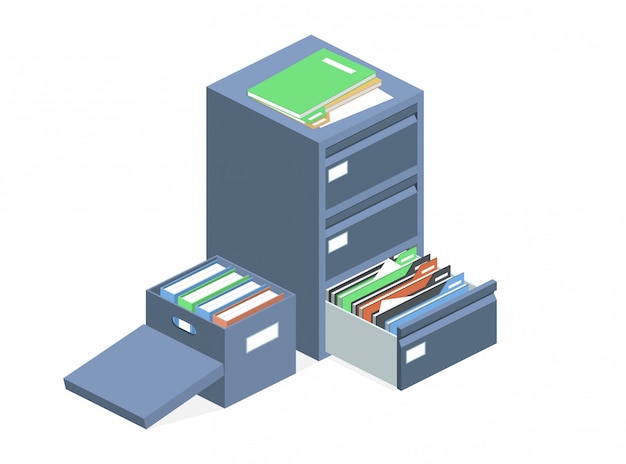Document Management System: Definition, Services, Process, And Tools
Running a business is not easy, especially when dealing with paper files and important documents, and you cannot afford to misplace any. This is the reason why companies are shifting from paper-based cabinets to a smartphone friendly document management system.
A DMS, i.e. Document Mangement system, is a smarter, faster, and more efficient way to handle documents. But what is document management system DMS, and how does it work? Worry not; we at Ekklavya have got you covered!
In this blog, we’ll explore what is document management system, its features, benefits, tools, and processes that can transform the way businesses handle their documents.

What Is Document Management System
A Document Management System (DMS) is software designed to digitally organize, store, and retrieve documents.
It plays a crucial role in digitizing document processes by transforming traditional paper-based workflows into efficient digital operations. This transition streamlines workflows and reduces the time and effort required to manage documents.
A DMS can be on-premise or cloud-based software.
On-Premise DMS: Hosted on the company's servers, providing full control over data.
Cloud-Based DMS: Hosted on cloud platforms, allowing accessibility from anywhere with an internet connection.
What Is Document Management Software
Document management software takes the DMS concept a step further by providing tools and features that make managing documents seamless.
Key Features Include:
1. Automated Document Capture: Quickly scans and digitizes paper files.
2. Search Functionality: Locates files instantly using keywords.
3. Integration Capabilities: Works with tools like email, CRM, or ERP systems.
Popular Examples:
Google Workspace
Microsoft SharePoint
Eklavya's eOffice
Eklavya’s eOffice stands out by offering user-friendly solutions tailored for businesses of all sizes.
Benefits Of Document Management Systems
Now that you know about document management system, let’s see its benefits:
1. Efficiency Boost
With a DMS, tasks like retrieving files or sending approvals are automated, cutting down on wasted time. This means your team can focus on what truly matters—growing your business.
2. Enhanced Security
Data breaches can be costly, but a DMS keeps your documents safe with encryption and access controls.
3. Cost Savings
Say goodbye to expenses on paper, printing, and physical storage. A DMS helps reduce these overheads significantly.
4. Better Collaboration
Teams can access, edit, and share files in real time, no matter where they are. Hence, DMS are remote environment friendly.
5. Compliance Made Easy
Meeting regulatory standards is crucial, especially in industries like healthcare or finance. A DMS helps maintain audit trails, automate retention schedules, and ensure compliance.

Key Features Of Document Management Systems
A DMS is more than just a digital filing cabinet. Its key features include:
1. Version Control: DMS tracks all changes made by file editors in real-time. It reduces the time to send updates through physical copies or emails. This way, the teams always work on the most recent document version.
2. Document Retention and Archiving: Your office cabinet probably won’t be able to store 10-20 years of files for future reference. But a document management system can. It keeps historical records intact without any physical storage needs.
3. Integration Capabilities: Syncs seamlessly with industry-specific software like CRM or ERP tools.
4. Audit Trails: Tracks all actions on documents to ensure accountability and security.
Which Tools Are Best For Document Management?
Eklavya’s eOffice stands out among all the tools available due to its intuitive interface and comprehensive features.
Eklavya’s eOffice Features:
Customizable Templates: Tailored for different business needs.
Cloud Storage: Secure, scalable, and accessible from anywhere.
AI-Assisted Document Capture: Reduces manual input, boosting efficiency.
Data Security: Your documents are safe with digital signatures and secure access.
Pro Tip: Businesses that use solutions like Eklavya’s eOffice often report a 40% boost in efficiency thanks to its intuitive design and robust capabilities.

What Are The Management Challenges Of Office Document Management System
Transitioning to a DMS isn’t without challenges. Here’s how to address them:
1. Resistance to Change
Employees accustomed to paper-based systems may be hesitant. Solution? Offer training and highlight the benefits of a DMS to gain team buy-in.
2. Data Migration Issues
Moving files from legacy systems to a DMS can be complex. Partnering with an expert provider likeEklavya ensures a smooth migration.
3. Security Vulnerabilities
While a DMS improves security, it’s essential to implement features like encryption and role-based access to mitigate risks.
How Does Document Management System Work
Understanding how document management system works can help businesses make the most of it. Here’s the process:
1. Document Capture: Converts physical documents into digital formats using scanning tools.
2. Categorization: Assigns metadata or tags to make files searchable.
3. Storage: Saves documents securely in a centralized repository.
4. Access & Retrieval: Provides authorized users with instant access to information through advanced search tools.
5. Archiving: Automates the storage of inactive documents for compliance or historical reference.

What Is The Role Of A Document Manager?
A document manager is responsible for overseeing the entire document management process. This role is crucial for organizations that aim to optimize their filing and documentation management processes.
Key Responsibilities include:
Maintaining the DMS to ensure smooth operation.
Providing user support and troubleshooting.
Ensuring compliance with document data management policies.
Concluding Thoughts on Document Management
A document management system is more than just a digital upgrade; it’s a strategic tool that enhances efficiency, security, and collaboration. Adopting a DMS like Eklavya’s eOffice can be a total time and money saver for your business.
Ready to transform your filing and documentation management processes? Eklavya is here to help with intuitive, cost-effective solutions tailored to your needs.
Take the first step towards smarter document management— contact Eklavya today!
Frequently Asked Questions About Document Management
A document information management system is a software solution that allows organizations to store, manage, and track electronic documents and images of paper-based information.
The core features of document data management are:
Automated Document Capture – Simplifies data input.
Search Functionality – Ensures quick file retrieval.
Data Security – Protects sensitive information from unauthorized access.
Version Tracking – Monitors changes made to documents.